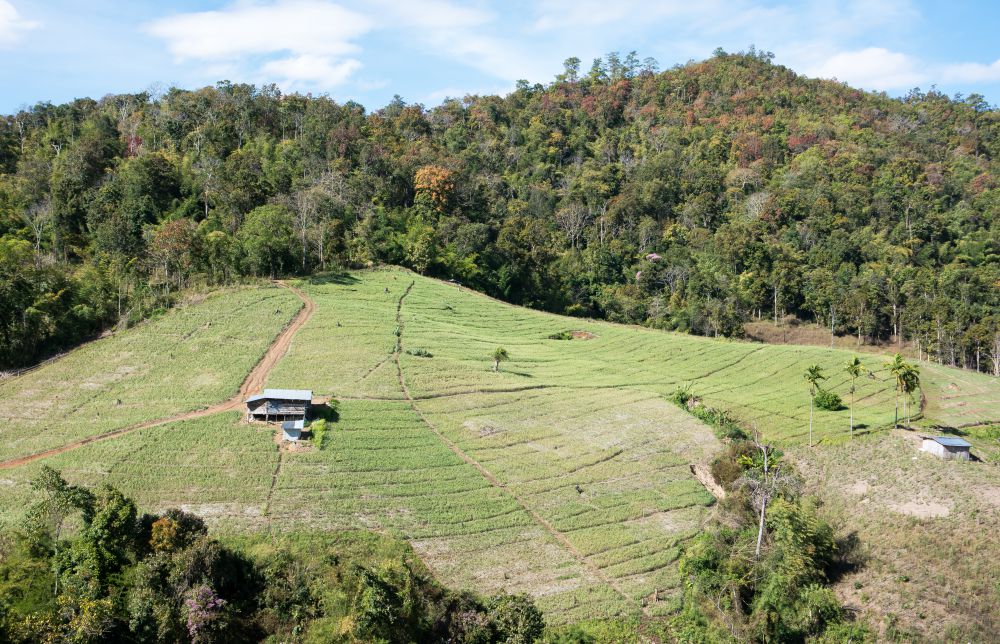
Carbon Crops

Turning forests into farmland is terrible for the Earth. The practice, widespread around the world, is a major culprit in greenhouse gas emissions, which in turn drive climate change. And because it’s unlikely to end soon, it raises the question: What’s the way to do it that minimizes the release of carbon stocks — carbon dioxide trapped in plants — into the atmosphere?
Two options stand out: farm for high yields on smaller plots or try to store carbon on farmland at the expense of yields. Now, after years of study, David Williams, a postdoctoral scholar at UC Santa Barbara’s Earth Research Institute, and his co-researchers say the first option is the clear winner.
Writing in Current Biology, Williams and his co-authors report that farming smaller, high-yield plots coupled with conserving as much natural habitat as possible — what they call “land sparing” — resulted in a greater amount of carbon being stored than any other scheme.
“It’s pretty simple in terms of the pure science,” Williams said. “We looked at how carbon stocks vary across a gradient of yields. And from that you can work out how best to theoretically set up your landscape to conserve carbon. What we found, across the board, is what you want to do is conserve as much natural habitat as possible. That’s your main priority. And to do that, for any given amount of food you want to produce, this means you need to farm it with as high yields as sustainable.”
Williams, along with his co-authors — Andrew Balmford and Rhys Green of the University of Cambridge, Ben Phalan of Universidade Federal da Bahia, Brazil, and Claire Feniuk of the Royal Society for the Protection of Birds — studied farming in three diverse habitats: the humid tropics of Ghana, dry tropical forest in Mexico and temperate wetlands and forests in Poland.
“We found that land sparing resulted in a greater amount of carbon being stored than any other,” Williams said. “So, slightly counter-intuitively, trying to conserve carbon on farmland resulted in less carbon being stored across the landscape as a whole. This was because it resulted in lower yields and so required larger areas to produce the same amount of food, and therefore meant less land could be spared for natural habitats.”
The researchers conducted field surveys of 11,000 trees, did in-depth interviews with farmers and studied existing agricultural data to evaluate the range of strategies to minimize the loss of above-ground carbon stocks. They found that despite the differences in climates and biomes, land sparing consistently emerged as the best option.
“We were maybe surprised by just how consistent and how strong the result was,” Williams said. “The systems we investigated are very different both in terms of the natural habitats and the farming systems, but in each case it was clear that land sparing consistently had the potential to store greater amounts of carbon than any other system. However, this is the same result as we get for conserving biodiversity, so we weren’t that surprised.”
Looking ahead, Williams said conserving natural habitats is the most important approach for conserving carbon stocks — and, potentially, slowing climate change. When those habitats are lost, he said, so too is a huge amount of carbon.
The research also highlights the need for society to do all it can to reduce overall levels of food demand, such as cutting waste, eating less meat and improving distribution. Finally, he said, “We really need to think carefully about where our food comes from and how it is produced: Systems that may look environmentally friendly can actually be worse for the environment overall if we don’t look at those off-farm impacts.”



